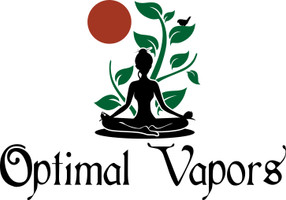Vaporizers are a type of inhaler that turns liquid substances into vapor. The three types of heat transfer in Vaporizers are conduction, convection, and induction. The vaporizer uses conduction, convection, or induction processes to heat the substance and turn it into vapor.
What is the difference between Conduction, Convection, and Induction?
Conduction: Conduction is the process of heat transfer from a solid surface to a fluid. This is the transfer of heat through direct contact with a solid object. It is a type of heat transfer where heat moves from one place to another by direct contact. For example, if you put your hands on a hot stove, the heat will transfer to your hands via conduction.
It is the process of transferring heat from a higher temperature to a lower temperature. When you touch metal that has been sitting in the sun, you are feeling conduction. In the simplest sense, conduction is when heat moves from one place to another through a material. In other words, it's the transfer of heat from one place to another by direct contact or proximity.
Convection: Convection is the process of heat transfer from one fluid to another. Convection is a type of heat transfer where hot air or liquid rises and cool air or liquid sinks. It is the process of transferring heat from one place to another by moving heated substances. When we cook food on a stove, we are using convection to move heat from the stovetop to the food to cook it. Convection is the process by which heat moves in currents within fluids (liquid or gas) and between fluids and solids.
Convection is when heat moves from one place to another by currents of gas, liquid, or air. Convection is the transfer of heat by currents in liquids or gases. In other words, it's the transfer of heat from one place to another through a material that has a higher density than the material that surrounds it.
Induction: Induction is the process of heat transfer between two bodies that are not in contact with each other. Induction is the transfer of heat by electromagnetic waves. Induction is the production of an electric current in a conductor when it is exposed to an alternating magnetic field. Induction is when heat moves from one place to another by electromagnetic waves. In other words, it's the transfer of heat from one place to another through an electrical conductor such as copper wire or aluminum foil.
Use of the Three Processes in Vaporizers
Conduction: Conduction is when the herb or concentrate is heated by contact with a hot surface. The heat is then transferred to the air surrounding it which in turn heats up and creates vapor. This type of vaporizer is typically used for dried herbs and concentrates that are in a solid-state.
The Conduction Process is the most common method of vaporizing herbs. The heat source is usually a metal coil that is heated using electricity or butane. The heat source then heats the herbs and turns them into vapor.
The process in a conduction vaporizer is similar to boiling water on the stovetop. The liquid is heated by direct contact with an electrical heating element, usually made of metal wire wound around a ceramic cylinder with holes in it. This type of vaporizer can be very efficient because there is little to no heat lost when the liquid is heated.
Convection: Convection is the process of heat being transferred by currents in fluids, gases, or air. This can be caused by natural processes such as wind and ocean currents or by man-made devices such as fans and convection ovens. When using a vaporizer, convection is used to transfer heat from the device's heating element to the air inside of it. The Convection Process uses air to heat the herbs that are placed in a glass bowl. This process can be done manually by blowing hot air through it, or an electric heating element.
Convection occurs when hot air passes over the herb or concentrate and creates vapor. This type of vaporizer is typically used for dried herbs and concentrates that are in a liquid state or oil extracts that are in liquid form. In convection vaporizers, the liquid substance is heated through contact with hot air that has been passed over it either by blowing air over it or using a fan to push air over the substance being heated.
Induction: Induction occurs when an electric current passes through metal coils which then heats up to create vapor from any substance it comes into contact with. Induction Processes are relatively new and not as common as conduction or convection processes. These use electromagnetic waves to generate heat which then heats the herbs and turns them into vapor.
Induction is when an electric current produces an electromagnetic field that heats an object in its path without contact. A vaporizer with induction heating uses this process to reach higher temperatures than other types of vaporizers

